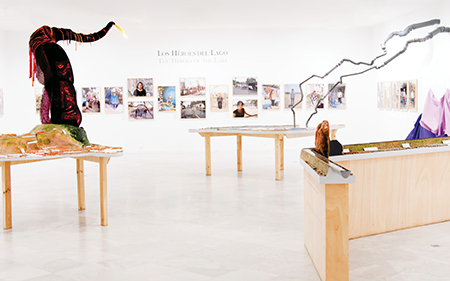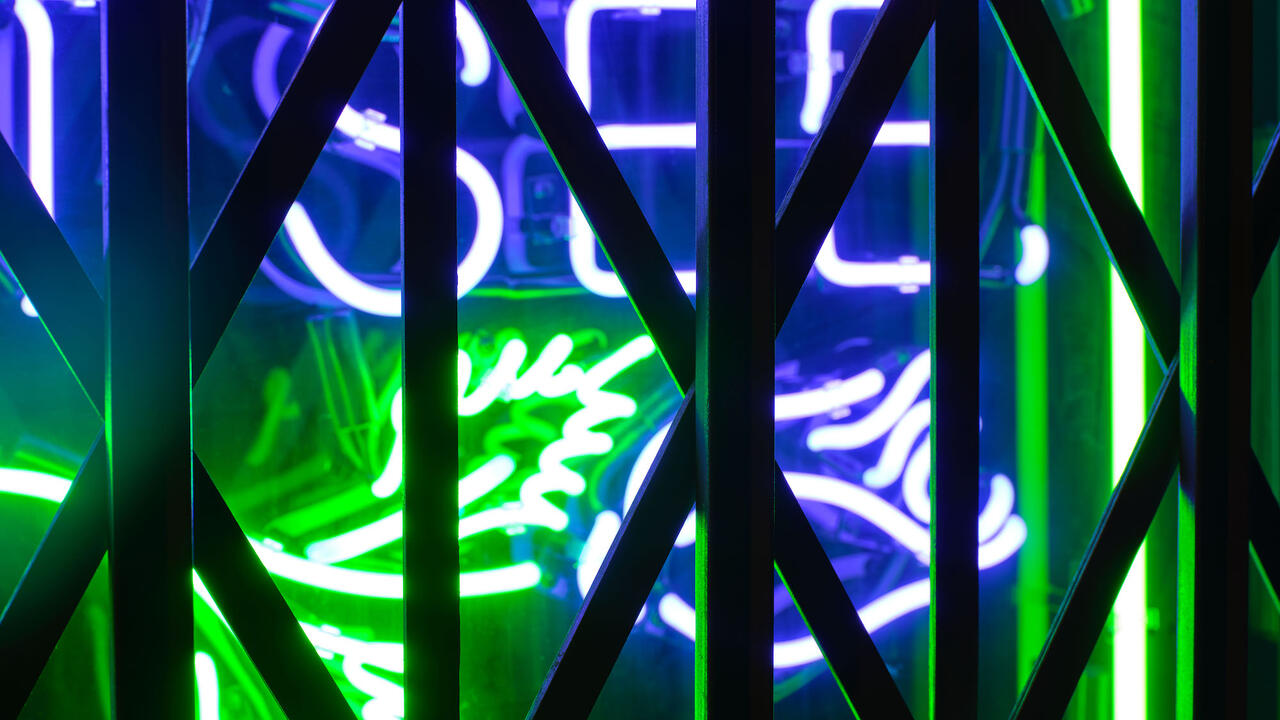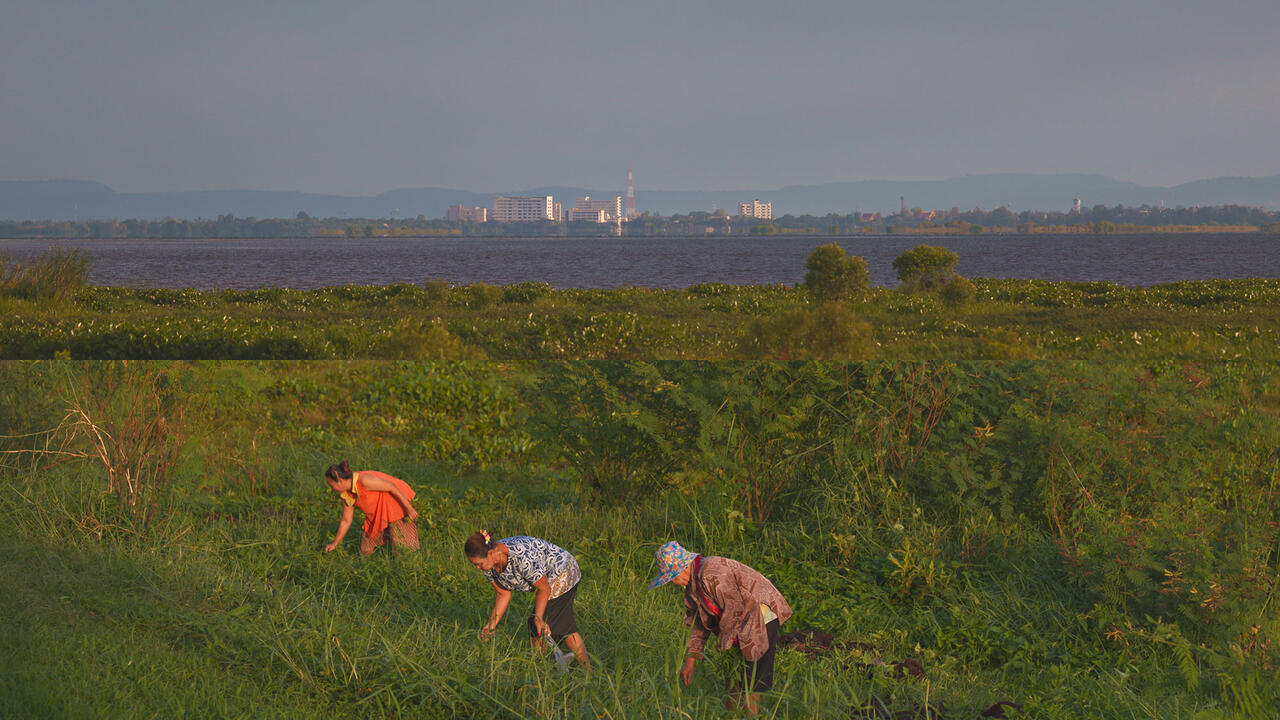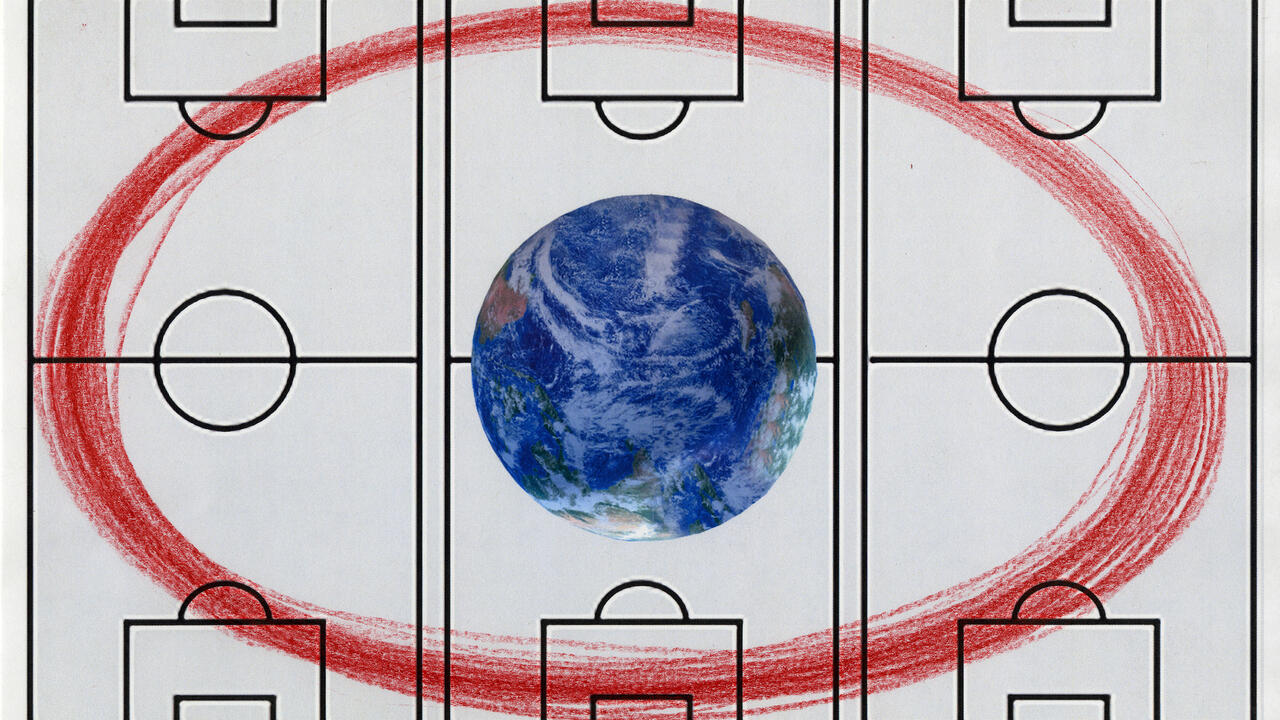Maria Thereza Alves

Since the early 1990s, Maria Thereza Alves has addressed both the devastating effects of Portuguese imperialism on the indigenous peoples of her native Brazil and the impact of the Spanish conquest in the Americas. Hosted by the Centro Andaluz de Arte Contemporáneo (CAAC), this long-overdue survey was, in part, a pre-history of her extensive project for dOCUMENTA(13), The Return of a Lake (2012). Extended in Seville, this room-sized installation centered on tabletop models that related the disastrous effects of the 1908 desiccation of Lake Chalco in Mexico City by Spanish businessman Iñigo Noriega Laso, and the ongoing injustices suffered by those who live in nearby Xico. Bookended by the earliest work in the exhibition, NoWhere (1991), in which overpainted photographs from Amazonas address European delusions of city planning in ‘empty’ territory, ‘The Long Road to Xico’ (1991–2014) illuminates the ecological assault and epistemological violence ushered in by colonialism. Given the city’s past as the main port for Spanish trade with the New World, the context of Seville granted particular acuity to the ethical armature of Alves’s decolonizing art. Moreover, CAAC’s home is the former Monasterio de Santa María de las Cuevas, from where Cristóbal Colón (Christopher Columbus) planned his second voyage of 1493 and where his remains were once interred.
Several works were sited in the monastery’s grounds. Two enlarged bronze jackfruit seeds (“When they come, flee”, said my grandmother to my mother and “When they come, flee”, said my mother to me, 2014) were placed at the foot of a mighty ombú tree near the entrance – a specimen apparently brought from South America by Colón’s son, Hernando. Native to Southeast Asia, jackfruit was first planted in Brazil as a ready supply of food for slaves, although it’s now a forest bully, outcompeting native species. Such ecological and cultural dynamics of displacement and ‘misunderstandings’ of non-natives in alien contexts seeded many of the perceptual clouds and squalls of concepts that gathered and precipitated throughout the exhibition.
Alves’s aesthetics don’t sit comfortably with the ‘relational’ label, yet her art has seeped frequently beyond spectatorship into collaboration, advocacy and political activism. Wary that incautious claims to activism make art seem toothless, curator Pedro de Llano included three vitrines of documents for the avoidance of any doubt. (Moreover, co-written wall texts on each work were both rigorous and generous.) This supplementary material reflected Alves’s formidable formative work, including speaking at the UN Commission on Human Rights in 1979 as a member of the International Indian Treaty Council, representing Luiz Inácio da Silva’s Workers’ Party in the US, and forging indigenous peoples’ rights onto the agenda of the São Paulo Green Party for the first time in 1988.
Presented as six boards of annotated maps and photographs, Seeds of Change (1999–ongoing) is an astonishing investigation into the unintentionally exotic botany of port cities, including Bristol and Liverpool, and how their colonial trading and slaving history can be read through dockside flora. Ships coming from the Americas used earth for ballast – inevitably containing seeds – which was often dumped on arrival. ‘Unrejected Wild Flora’ (2014) comprises a series of brightly coloured paintings made using plants as rudimentary brushes – plants which had happily sprouted outside the artist’s home until someone tore them up, deciding they were unwelcome. The concept of a weed only exists if you are invested in defending a monoculture, Alves cautions. By contrast, her art solicits biotic diversity and linguistic plurality. Twenty paintings of different fruit from an Amazonas market (This Is Not an Apricot, 2009) disclose an uncomfortable truth: every fruit is now referred to as an apricot because the indigenous names no longer exist. Like the scores of extinct native Brazilian languages, Alves stresses how they were not ‘lost’ but systematically persecuted out of existence.
Two of the eight videos in the exhibition emphasized the cultural specificity and richness of non-verbal gestures. Oculesics. An Investigation of Cross-Cultural Eye Contact (2008) scrutinizes eye contact (a sign of honesty for Europeans yet of aggression to many other cultures) while Tchám Krai Kytõm Pandã Grét (Male Display Among European Populations) (2008) satirizes colonial anthropology: an indigenous Brazilian woman asks a white European man to account for some members of his exotic tribe’s superstitious habit of touching their cojones. This seriously ironic method of reversal was one of the exhibition’s most effective strategies. Fair Trade Head (2007) comprises a portrait photograph of a tattooed Frenchwoman named Emilie, the first person to sign up to a scheme Alves devised in response to the French Ministry of Culture’s 2007 veto of a Rouen museum’s wish to repatriate a mummified Maōri head. Upon their deaths, participants will have their heads dispatched to New Zealand and only returned to their descendants when the Ministry has changed its policy.
















